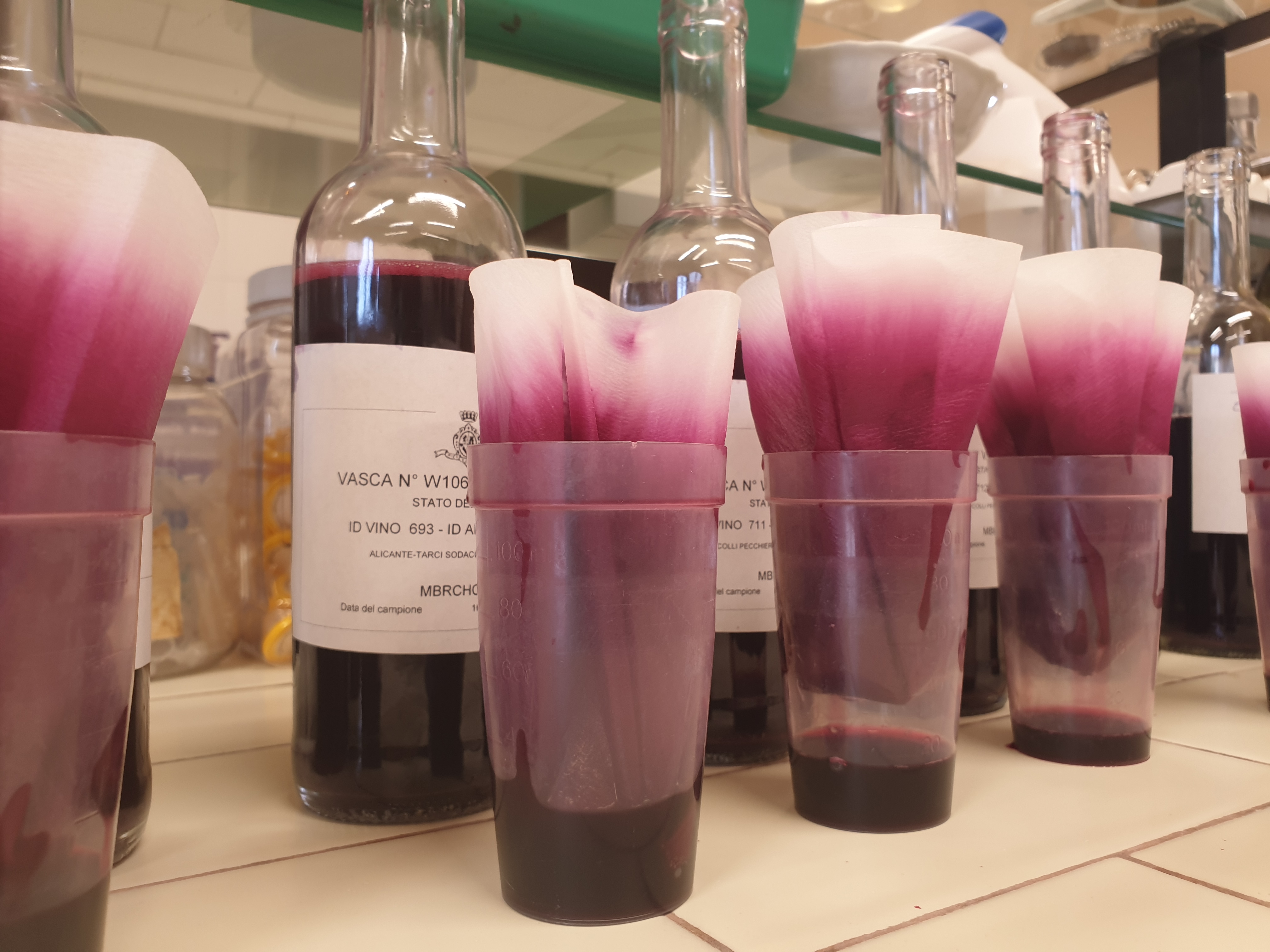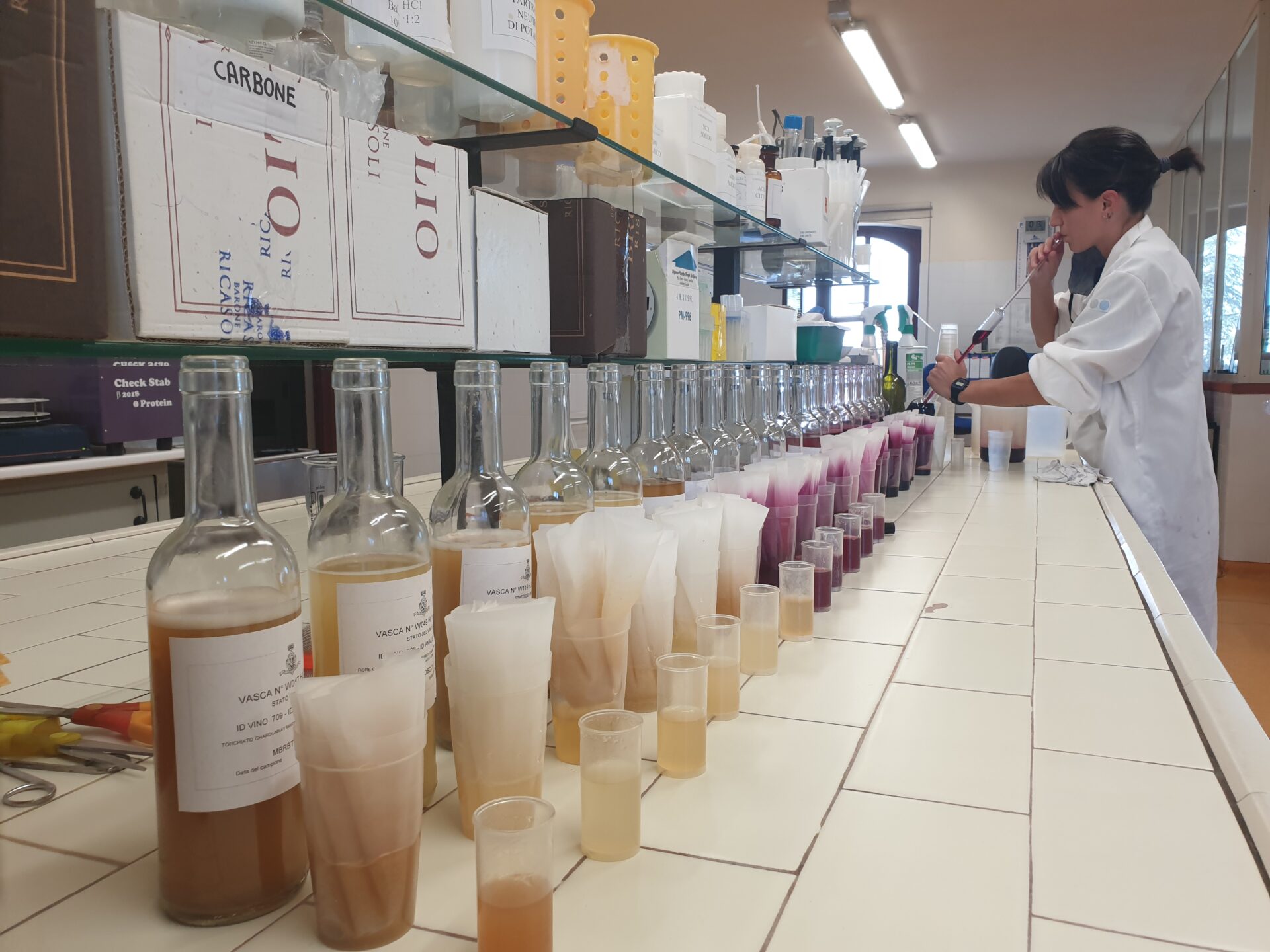

From the harvest to the cellars
18 September, 2020In these days the collected, washed and destemmed grapes begin to arrive in the cellars. We all have in mind the image of the must that seems to be boiling in stainless steel vats, but what exactly happens in this first stage of winemaking? The sugar in the grapes turns into alcohol and the must turns into wine. This is the process called alcoholic fermentation.
And in these days the work of our internal laboratory – one of the jewels in our crown – is particularly important. Manager Fabio Cascella says: “During fermentation we have to perform daily analyses to avoid risks such as halting the fermentation process or the development of undesirable fermentative variations.”
“Every day,” Fabio continues, “we receive 70 to 100 samples. A really significant number that we can manage thanks to having instruments of the latest generation that are able to analyze both quickly and accurately. We measure sugar, pH, total acidity and malic acid before and during fermentation. And we try to understand if what was found in the vineyard matches what we find in the vat.”
A curiosity: “In addition to data collection and monitoring, we taste all the samples that come to us one by one. In this way, we can understand many things in advance: at what point the sugars are, if there are deviations in aromas and flavors, which analyses should take priority. Human sensitivity matters a lot! Already at this stage you can perceive the difference between the various musts, both at the aromatic level and at the level of structure: the first indications are all there of what the wine will be.”







